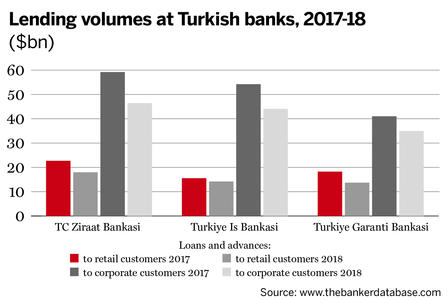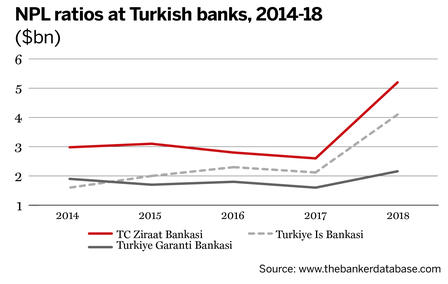Following a difficult 18 months, there are hopes that Turkey’s economic performance may start to improve and its banks may increase lending. Marie Kemplay reports.
Last week Turkey cut its benchmark rate for the fifth time since July, with a decrease of 75 basis points to 11.25%. The move aims to encourage more lending and boost economic growth.
Turkey’s economy struggled in 2019; following the country’s currency crisis in 2018 it had a brief recession where the economy saw a year-on-year contraction in three consecutive quarters to mid-2019. This year the government is targeting economic growth of 5%.
Turkey’s big banks decreased the amount they lent in 2018 compared with 2017, to both retail customers and corporates. For example, Turkey’s largest bank by Tier 1 capital, TC Ziraat Bankasi lent $22.7bn to retail customers in 2017, decreasing to $17.99bn in 2018. In 2017 it lent $59.2bn to corporate customers, decreasing to $46.4bn the following year.
Non-performing loan (NPL) levels have spiked at Turkish banks in recent years. Turkiye Garanti Bankasi, the country’s third largest bank, saw its NPL ratio double from 2.6% in 2017 to 5.2% in 2018. Increased NPL levels may have affected the ability or willingness of some banks to increase their lending.




